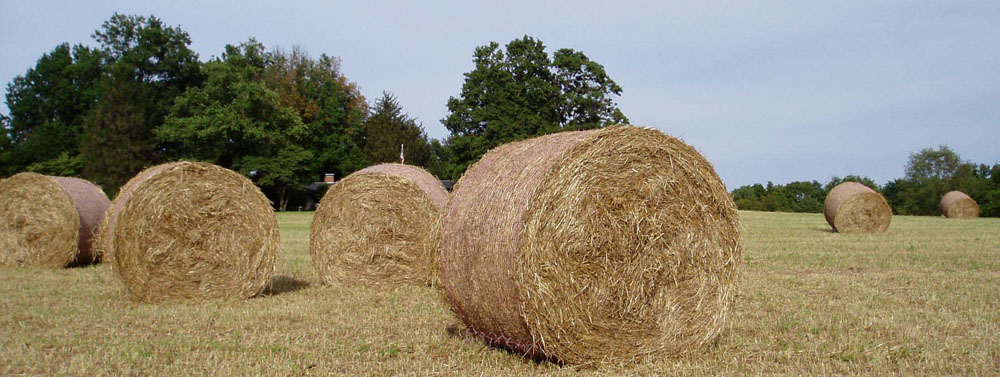Small Farms Transform Renewable Energy In 2022
In the most recent post, the case was made that in their role as producers, farms transform inputs into outputs more than establish and maintain markets in the final goods and services, retail sector. The 2022 Census of Agriculture also shows that smaller farms play a significant role in transforming energy inputs into more usable renewable energy fuels.
In the previous post, the data from Volume 1, Table 48 of the USDA, 2022 Census of Agriculture NAICS codes were used to illustrate that farms require capital to be successful regardless of farm. Also, even though farms produce more than one type of product, they usually are defined by one category of product, identified by the NAICS code. Principally, NAICS farms are divided into crop and livestock production. The NAICS codes do not define farm energy production, or food production.
Previously, the point was made that the most valuable market for agricultural products is in retail food. This is followed by lower values for agricultural energy fuels. Finally in the rank of three markets, livestock feed had lower value than bioenergy markets.
Farm energy data wasn’t available in the NAICS codes in Table 48, but some farm energy production is provided in Table 49 of the same 2022 Census of Agriculture, Volume 1. The data within this table is thin. Five types of energy produced on farms are identified: solar, wind, geothermal, hydroelectric, and methane digesters. The ‘thin data’ part is that only the number of farms is identified. The attached chart, the values on the y-axis, farms numbers and percent of farms producing renewable energy came from Table 49. The other data related to economic value of farm production and farm size by acres came from USDA, NASS Quick Stats. Data filters for 2022 census of ag and ‘energy’ in commodities brought up more details for the Census farm generated renewable energy data.
The levels of production provided here were user selected. As discussed in a post from March 2024, US 2022 Ag Census Farms – Who are They?, it was established that traditional measures of farm size (acres) and value of production ($) do not always represent farm size. But in our discussion today, they serve as a perspective on renewable energy.
The farm energy data is easily aggregated into farms of 100 acres or less, and farms that produce less than $10,000 in value of farm production (in this case federal farm payments are included). Across all five categories, approximately half of all farms producing renewable energy are below 100 acres and on farms with less than $10,000 in value of production. In only two categories, wind and methane digesters, do farms below 100 acres and $10,000, represent 20 to 30 percent of energy producing farms using those technologies. These two categories of renewable energy technologies likely require a greater capital investment to enter production.
US. farm energy production has increased in 2022 over in 2017 by 2 percent. Although it increased by more for wind, solar, and small hydroelectric and the number of farms declined for methane digesters and geothermal energy. Out of the 1.9 million farms, renewable energy production reported in Table 49 occurred on only 8 percent of the total farms, 153,101 farms in 2022.
.
The Take Home Message
In the last post, a point was made that final use energy markets cannot be measured on US. farms. But part of the challenge was the data evaluated must reflect the data of analytical interest. Table 48 had excellent crop and livestock farm data, but it required Table 49 to provide some farm energy production data. The renewable energy data provided today does not indicate retail market value. It is only a first-step in looking at farms that are in the input to output transformation of renewable energy. If the energy is not used directly on the farm, most of the renewable energy value is added as it moves through the supply chain after it leaves the farm. This is the same way it works for food and livestock feed end use market values. As farm energy production increases, the data quality for renewable energy production on farms will also increase.
Part of the take home is pay attention to level of completeness in analytical data (Table 48 vs. Table 49 of Census of Ag). In the same vane, every farm benefits from gravity (water and grain flow), passive solar in heating and lighting, and passive geothermal in soil temperatures. Conservation of energy is another undocumented data factor in these datasets. Just because some data does not appear in an accessible dataset, do not exclude the possibility of new discovery through more difficult to access data.



Comments
Small Farms Transform Renewable Energy In 2022 — No Comments
HTML tags allowed in your comment: <a href="" title=""> <abbr title=""> <acronym title=""> <b> <blockquote cite=""> <cite> <code> <del datetime=""> <em> <i> <q cite=""> <s> <strike> <strong>